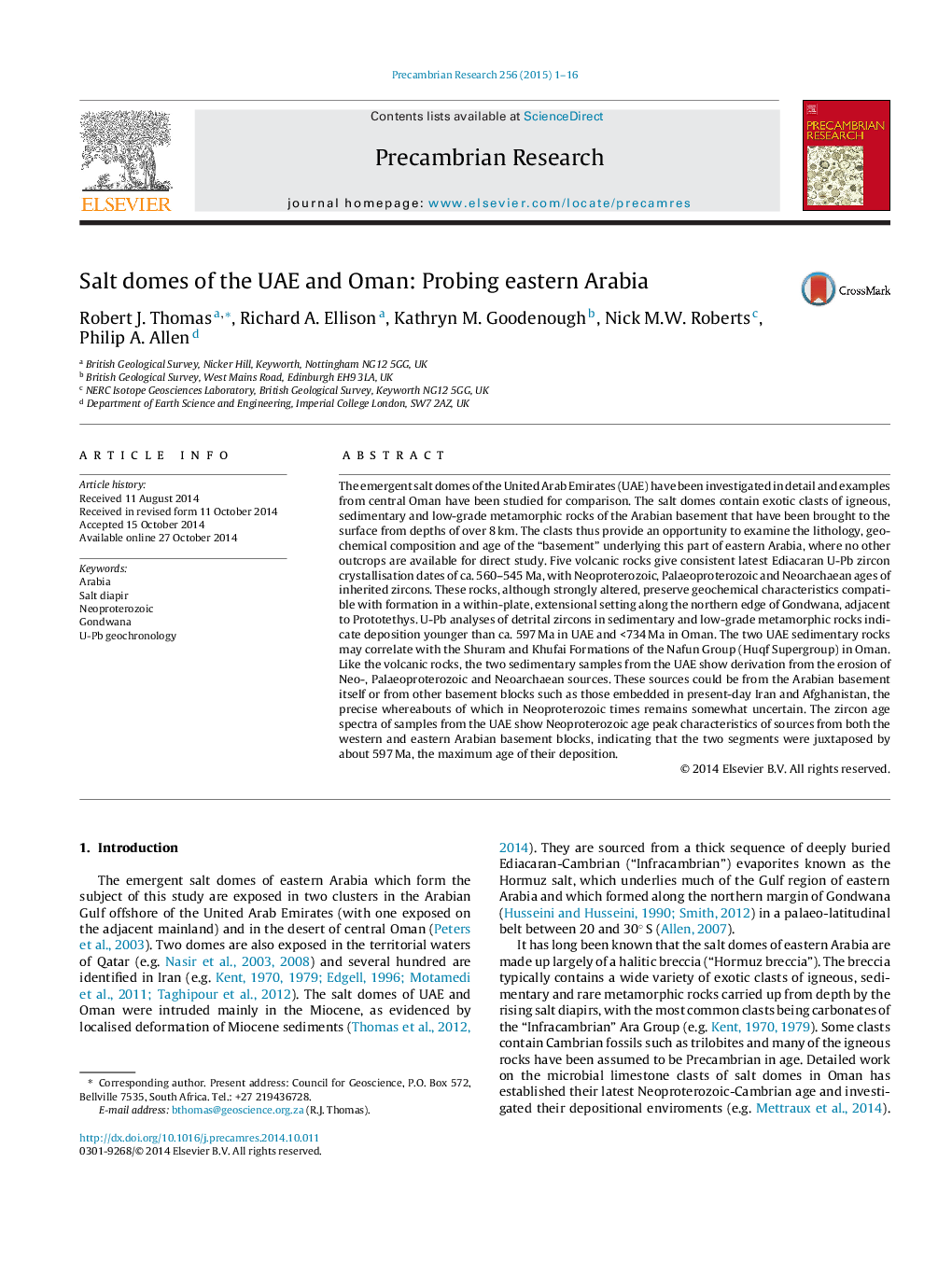| کد مقاله | کد نشریه | سال انتشار | مقاله انگلیسی | نسخه تمام متن |
|---|---|---|---|---|
| 4722901 | 1639619 | 2015 | 16 صفحه PDF | دانلود رایگان |
• Salt domes of UAE and Oman described.
• Exotic clasts in Cambrian Hormuz salt documented.
• Clasts dated by U-Pb zircon as Ediacaran.
• Geochemistry of volcanics consistent with rift origin.
• Implications for timing of Arabian assembly discussed.
The emergent salt domes of the United Arab Emirates (UAE) have been investigated in detail and examples from central Oman have been studied for comparison. The salt domes contain exotic clasts of igneous, sedimentary and low-grade metamorphic rocks of the Arabian basement that have been brought to the surface from depths of over 8 km. The clasts thus provide an opportunity to examine the lithology, geochemical composition and age of the “basement” underlying this part of eastern Arabia, where no other outcrops are available for direct study. Five volcanic rocks give consistent latest Ediacaran U-Pb zircon crystallisation dates of ca. 560–545 Ma, with Neoproterozoic, Palaeoproterozoic and Neoarchaean ages of inherited zircons. These rocks, although strongly altered, preserve geochemical characteristics compatible with formation in a within-plate, extensional setting along the northern edge of Gondwana, adjacent to Prototethys. U-Pb analyses of detrital zircons in sedimentary and low-grade metamorphic rocks indicate deposition younger than ca. 597 Ma in UAE and <734 Ma in Oman. The two UAE sedimentary rocks may correlate with the Shuram and Khufai Formations of the Nafun Group (Huqf Supergroup) in Oman. Like the volcanic rocks, the two sedimentary samples from the UAE show derivation from the erosion of Neo-, Palaeoproterozoic and Neoarchaean sources. These sources could be from the Arabian basement itself or from other basement blocks such as those embedded in present-day Iran and Afghanistan, the precise whereabouts of which in Neoproterozoic times remains somewhat uncertain. The zircon age spectra of samples from the UAE show Neoproterozoic age peak characteristics of sources from both the western and eastern Arabian basement blocks, indicating that the two segments were juxtaposed by about 597 Ma, the maximum age of their deposition.
Journal: Precambrian Research - Volume 256, January 2015, Pages 1–16
